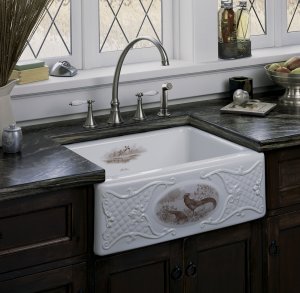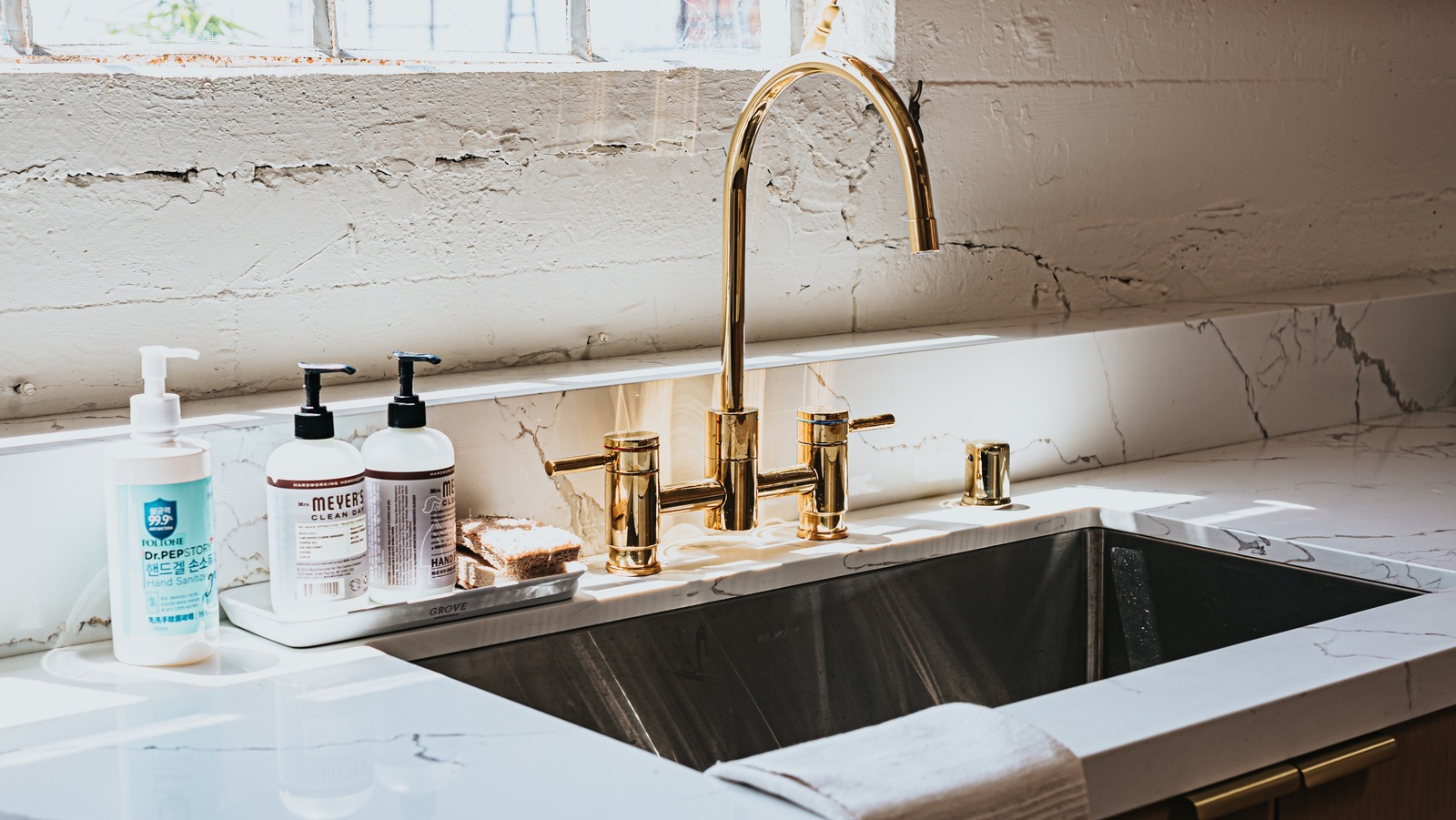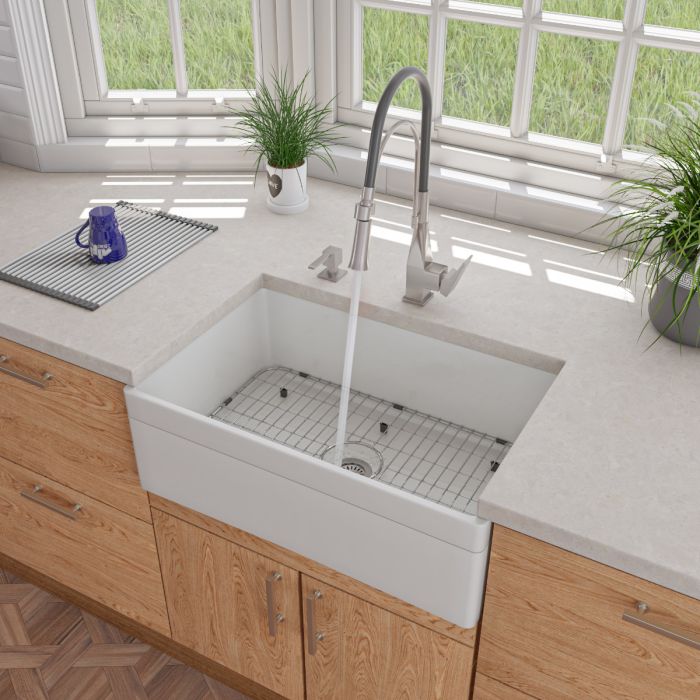When it comes to kitchen design, many homeowners focus on appliances, cabinets, and countertops, often overlooking the sink. However, decorative kitchen sinks can transform your cooking space from mundane to magnificent. In my experience, choosing the right sink not only enhances the beauty of your kitchen but also improves functionality. In this article, we’ll delve into everything you need to know about decorative kitchen sinks, from styles and materials to installation tips and maintenance. Let’s get started!
Why Choose Decorative Kitchen Sinks?
Decorative kitchen sinks serve as more than just functional fixtures; they are focal points that can define the aesthetic of your kitchen. Below are some benefits that come with choosing a decorative sink:
- Style Enhancement: A well-chosen sink can elevate the overall design of your kitchen.
- Increased Functionality: Many decorative sinks come with added features that enhance their usability.
- Variety of Options: There are countless designs, materials, and finishes to choose from.
Types of Decorative Kitchen Sinks
1. Farmhouse Sinks
Farmhouse sinks, also known as apron-front sinks, are characterized by their deep basins and exposed front. They are perfect for rustic and country-style kitchens. My encounter with a farmhouse sink has been transformative; it not only looks charming but also offers ample space for washing large pots and pans.
2. Under-Mount Sinks
Under-mount sinks are installed beneath the countertop, providing a seamless look. They are great for modern kitchens and are easy to clean, as there are no edges for food debris to accumulate. I love how they give a sleek and uncluttered appearance to my kitchen.
3. Vessel Sinks
Vessel sinks are above-counter sinks that come in various shapes and materials. They often serve as statement pieces, adding a bold touch to contemporary kitchens. I once installed a beautiful glass vessel sink that became the conversation starter during family gatherings.
4. Integrated Sinks
Integrated sinks are made from the same material as the countertop, creating a cohesive look. They are often found in modern designs and are incredibly easy to clean. My integrated sink is one of my favorite features due to its practicality and aesthetic appeal.
Materials Used in Decorative Kitchen Sinks
Choosing the right material is crucial for both aesthetics and functionality. Here are some popular materials used in decorative kitchen sinks:
1. Stainless Steel
Stainless steel sinks are durable, easy to clean, and resistant to corrosion. They are widely used in both commercial and residential kitchens. My stainless steel sink has stood the test of time and continues to look as good as new!
2. Cast Iron
Cast iron sinks are coated with enamel, providing a classic look and long-lasting durability. They come in various colors, making them versatile for different kitchen styles. However, they can be heavy and may require additional support during installation.
3. Composite Sinks
Composite sinks, made from a blend of acrylic and natural stone, offer the look of stone with added durability. They resist scratching and staining, making them ideal for busy kitchens. I appreciate how my composite sink maintains its elegance even with daily use.
4. Fireclay
Fireclay sinks are made from clay that is fired at high temperatures, making them extremely durable and resistant to chipping. They provide a vintage or farmhouse appeal, and I find their appearance adds character to my kitchen.
Choosing the Right Decorative Kitchen Sink
Consider Your Kitchen Style
Before making a purchase, consider your kitchen’s decor—modern, rustic, farmhouse, or traditional. The sink should complement the overall design. For instance, a sleek stainless steel sink fits well in a contemporary kitchen, while a farmhouse sink suits rustic styles perfectly.
Assess Your Needs
Think about how you use your kitchen. If you cook often, a deeper sink will be beneficial. On the other hand, if your kitchen is primarily for show, a stylish vessel sink might be more appropriate.
Check Dimensions and Installation Requirements
Ensure the sink fits your countertop and meets installation requirements. Some sinks may need additional support or specific plumbing arrangements.
Comparing Decorative Kitchen Sinks
| Type of Sink | Material | Pros | Cons |
|---|---|---|---|
| Farmhouse | Cast Iron, Fireclay | Spacious, Stylish, Durable | Heavy, Requires Extra Support |
| Under-Mount | Stainless Steel, Composite | Seamless Look, Easy to Clean | Installation may require professional help |
| Vessel | Glass, Ceramic | Statement Piece, Variety of Designs | Heightened Risk of Damage, Requires Maintenance |
| Integrated | Granite, Quartz | Seamless, Easy Cleaning | Limited Style Options |

Installation Tips for Decorative Kitchen Sinks
1. DIY vs Professional Installation
While some homeowners prefer to install their sinks personally, hiring a professional may save you time and ensure that the sink is correctly fitted and sealed. I made the choice to hire a professional when installing my granite integrated sink, and it turned out to be a wise decision!

2. Gather Necessary Tools
If you decide to take on the installation yourself, ensure you have all the necessary tools: a wrench, putty knife, level, and silicone caulk. Having these on hand can streamline the process significantly.
3. Check for Leaks
After installation, always check for leaks. Turn on the water and inspect the plumbing connections. This step is crucial to prevent future water damage and costly repairs.

Maintenance Tips for Decorative Kitchen Sinks
1. Regular Cleaning
To keep your sink looking pristine, implement a regular cleaning routine. For stainless steel sinks, use a gentle cleanser to avoid scratches. My go-to method includes a mix of vinegar and baking soda for an effective, natural cleaning solution.

2. Avoid Harsh Chemicals
Be cautious about using harsh chemicals, especially on composite and fireclay sinks, as they can damage the finish. I learned this the hard way and now opt for gentle cleaners for my sinks.
3. Use Sink Mats
To protect the surface and prevent scratches, consider using sink mats or grids, especially in stainless steel and composite sinks. They are a simple yet effective way to extend the life of your sink.

Decorative Kitchen Sinks: Pros and Cons
Pros
- Adds aesthetic value to the kitchen
- Available in various styles and materials
- Can improve functionality based on user needs
- Offers durability and longevity with proper care
Cons
- Some options can be expensive
- May require professional installation
- Heavy sinks may need extra support
- Maintenance requirements may vary by material

FAQs About Decorative Kitchen Sinks
1. What is a decorative kitchen sink?
A decorative kitchen sink is a stylish sink designed not just for functionality but also to enhance the overall look of your kitchen. They come in various styles, sizes, and materials.
2. How do I choose the right size sink?
Measure your available countertop space and consider how you use your kitchen. Choose a sink that fits well and suits your cooking needs.

3. Are decorative sinks more expensive than standard sinks?
They can be, but the cost varies significantly based on the material, brand, and style. It’s essential to balance your budget with your desired aesthetics.
4. How do I maintain my decorative kitchen sink?
Regular cleaning with gentle cleaners, avoiding harsh chemicals, and using sink mats can help maintain your sink’s beauty and functionality.
5. Can I install a decorative sink myself?
While some homeowners can manage the installation, hiring a professional is recommended for better results, especially with complex styles like under-mount or farmhouse sinks.
Conclusion
Decorative kitchen sinks offer a blend of functionality and aesthetic appeal that can elevate any kitchen. By considering the type, material, and installation preferences, you can find a sink that perfectly matches your style and culinary needs. Remember, whether it’s a rustic farmhouse sink or a sleek integrated option, your choice can significantly impact the overall design of your kitchen. Happy sink shopping!